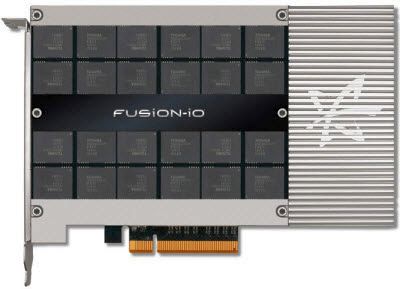Fusion-io Punches Through One Billion IOPS Barrier

Fusion-io has cut flash storage latency yet again after demoing a billion input/output operations per second
Storage specialist Fusion-io continues to improve the latency of flash storage devices after it achieved one billion input and output operations per second (IOPS) in a demonstration.
The company made the announcement just one month after a test involving its solid-state memory storage subsystems, showed how a single server test system reached 1.11 million transactions per second (tps).
Software And Hardware
In the most recent demonstration however, the company used eight HP ProLiant DL370 servers, each equipped with eight ioDrive2 Duos, to break the one billion IOP barrier when transferring 64 byte data packets.
“Rethinking how to provide powerful modern CPUs with the data they need through sophisticated software architectures has enabled us to deliver the ultra low latency performance needed to achieve one billion IOPS with existing hardware and Fusion ioMemory solutions,” said David Flynn, Fusion-io CEO and chairman.
“This breakthrough is not something that could be achieved with hardware alone. Intelligent software that optimises NAND flash as a low latency, high-capacity, non-volatile memory solution for enterprise servers can transform the way organisations process the immense amounts of data that powers our lives today,” Flynn added.
According to Fusion-io, the one billion IOPS demonstration is a preview of an extension to the ioMemory architecture called Auto Commit Memory, which significantly reduces latency and system overhead in transferring data.
“Auto Commit Memory uses the unique architecture of ioMemory to reliably deliver data at peak performance levels,” said the company. “Data integrity is assured by the ioMemory architecture’s ability to flush all in-flight data, even if the power is abruptly cut, without the need for super capacitors or batteries. The Auto Commit Memory extension will provide developers with new semantics to directly control the datapath to persistent memory, introducing a fundamentally new building block for how modern data systems are designed.”
Fusion-io is essentially pioneering a new storage memory platform, which moves active data closer to the CPU where it is processed, in order to significantly reduce latency (i.e. a delay – or how much time it takes for a packet of data to get from one designated point to another). Its Auto Commit Memory, an extension to the company’s Fusion ioMemory subsystem, allows data flowing between Fusion-io’s flash memory components and the processor to bypass the server’s operating system.
Wozniak Input
 Fusion-io is not just any old storage start up. Back in February 2009, Steve Wozniak, co-founder and former chief technologist of Apple came out semi-retirement to join Fusion-io, as its chief scientist.
Fusion-io is not just any old storage start up. Back in February 2009, Steve Wozniak, co-founder and former chief technologist of Apple came out semi-retirement to join Fusion-io, as its chief scientist.
At that time the company said that its ioDrive was capable of 120,000 random read/write IOPS. Now, three years later, we are passed the one billion IOPS mark.
“Breaking the one billion IOPS barrier is certainly a powerful way to demonstrate our ioMemory architecture,” said Steve Wozniak, Fusion-io Chief Scientist in a statement. “As an engineer, what really excites me about extensions to our core technology such as ACM are the possibilities introduced when flash is utilised as a new memory tier.”
“Instead of treating flash like storage, where data passes through all of the OS kernel subsystems that were built and optimised for traditional storage, our core ioMemory technology offers a platform with new programming primitives that can provide system and application developers direct access to non-volatile memory,” said Wozniak.